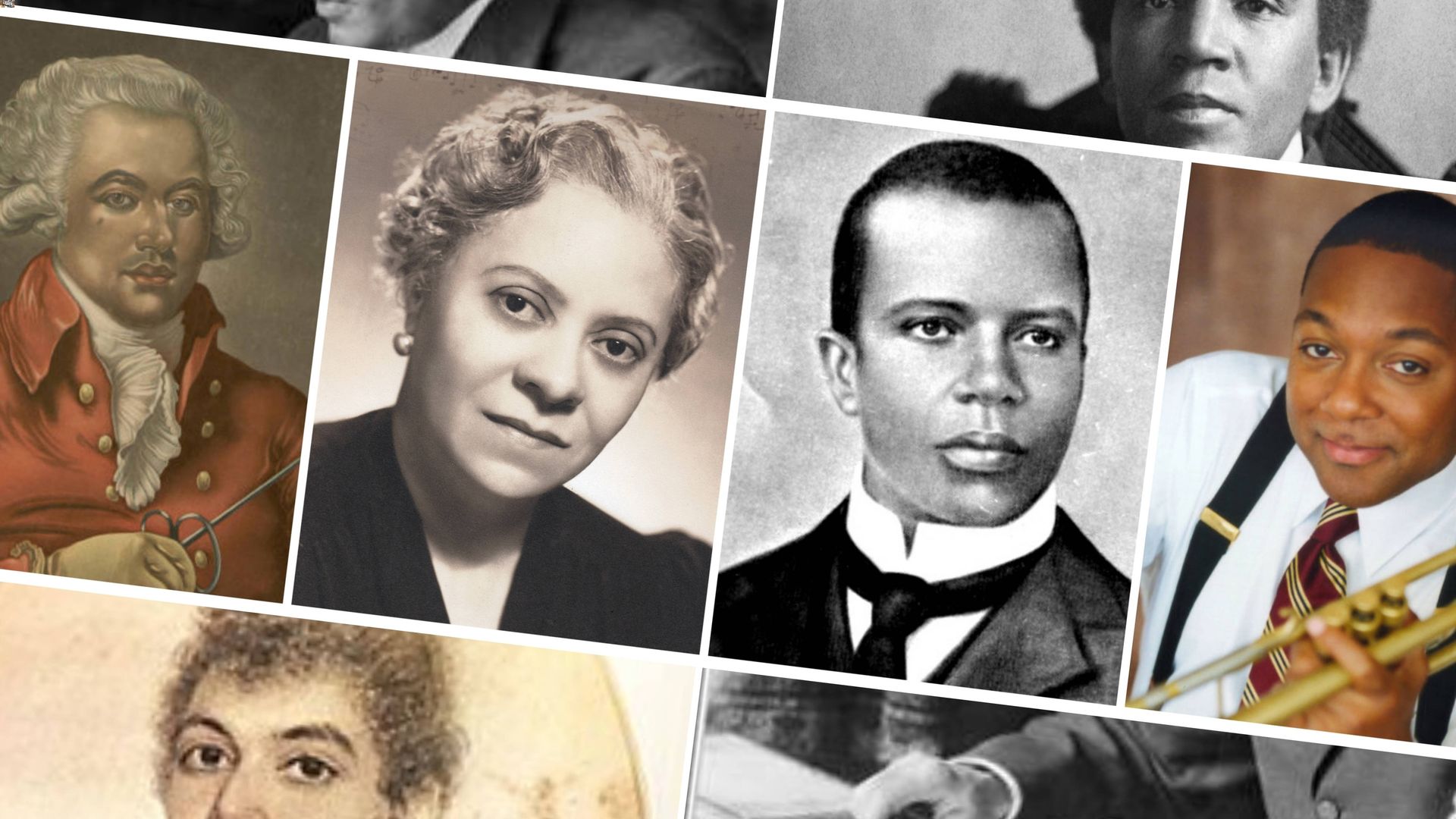Home>Production & Technology>Digital>How The Advance Of The Digital Age Is Affecting The Trends In The Music Business


Digital
How The Advance Of The Digital Age Is Affecting The Trends In The Music Business
Published: March 10, 2024
Discover how the digital age is reshaping the music industry trends and learn how to adapt and thrive in this evolving landscape. Explore the impact of digital advancements on the music business.
(Many of the links in this article redirect to a specific reviewed product. Your purchase of these products through affiliate links helps to generate commission for AudioLover.com, at no extra cost. Learn more)
Table of Contents
Introduction
The music industry has undergone a profound transformation in recent years, largely due to the rapid advancement of the digital age. With the emergence of innovative technologies and the widespread adoption of digital platforms, the way music is created, distributed, and consumed has experienced a seismic shift. This evolution has not only revolutionized the business landscape but has also fundamentally altered the dynamics between artists, record labels, and music enthusiasts.
The traditional model of purchasing physical albums or singles from brick-and-mortar stores has been eclipsed by the rise of streaming services. This shift has not only redefined the way music is accessed but has also reshaped the revenue streams for artists and industry stakeholders. Moreover, the digital age has ushered in a new era of marketing and promotion, leveraging social media, data analytics, and targeted advertising to engage with audiences on a global scale.
As the digital age continues to exert its influence, the music industry is witnessing a fundamental reconfiguration of artist development and talent discovery. The democratization of music production and distribution has empowered independent artists, enabling them to reach a global audience without the backing of major record labels. This democratization has also led to a diversification of musical genres and styles, reflecting the rich tapestry of global culture in the digital era.
In this article, we will delve into the multifaceted impact of the digital age on the music business, exploring the rise of streaming services, the evolving patterns of music consumption, the paradigm shift in marketing and promotion strategies, the transformation of revenue streams, and the changing landscape of artist development. By examining these key areas, we aim to provide a comprehensive understanding of how the digital age has catalyzed a paradigm shift in the music industry, shaping its trajectory in the 21st century and beyond.
The Rise of Streaming Services
The advent of streaming services has heralded a new era in the music industry, fundamentally altering the way audiences access and engage with music. Streaming platforms, such as Spotify, Apple Music, and Amazon Music, have emerged as the primary conduits through which music is consumed in the digital age. This paradigm shift has transcended the traditional model of purchasing physical albums or digital downloads, offering listeners unparalleled convenience and access to an extensive catalog of songs and albums at their fingertips.
One of the defining features of streaming services is the concept of on-demand access, enabling users to explore a vast array of music across genres, eras, and geographic origins. This democratization of music consumption has empowered listeners to curate personalized playlists, discover new artists, and delve into niche genres, transcending the limitations of traditional radio or physical music collections. Moreover, the seamless integration of streaming platforms with smart devices and digital assistants has further streamlined the music listening experience, blurring the boundaries between technology and artistry.
The rise of streaming services has also catalyzed a profound shift in the revenue model for the music industry. While the transition from physical sales to digital downloads initially posed challenges, the subscription-based and ad-supported revenue streams of streaming platforms have reinvigorated the economic landscape for artists and record labels. Through innovative licensing agreements and royalty structures, streaming services have provided a sustainable income source for musicians, fostering a more equitable distribution of revenue compared to the traditional model.
Furthermore, the global reach of streaming platforms has facilitated cross-cultural exchange and the discovery of music from diverse regions, transcending geographical barriers and fostering a more interconnected global music community. This interconnectedness has not only amplified the visibility of artists from non-mainstream markets but has also enriched the musical tapestry with a rich tapestry of sounds and narratives from around the world.
In essence, the rise of streaming services has redefined the dynamics of music consumption, revenue generation, and cultural exchange, positioning digital platforms as the linchpin of the modern music ecosystem. As streaming continues to evolve and innovate, its impact on the music business will continue to shape the industry's trajectory, offering both opportunities and challenges for artists, labels, and music enthusiasts alike.
Impact on Music Consumption
The advent of streaming services has revolutionized the landscape of music consumption, ushering in an era of unprecedented accessibility and diversity. Unlike the traditional model of purchasing physical albums or digital downloads, streaming platforms have democratized music consumption, offering listeners an extensive catalog of songs and albums at their fingertips. This paradigm shift has empowered audiences to explore a vast array of music across genres, eras, and geographic origins, transcending the limitations of traditional radio or physical music collections.
The concept of on-demand access lies at the heart of streaming services, allowing users to curate personalized playlists, discover new artists, and delve into niche genres. This level of personalization has redefined the way people engage with music, enabling them to tailor their listening experiences to suit their moods, activities, and preferences. Whether it's creating a high-energy workout playlist, unwinding with ambient instrumental tracks, or exploring the latest releases in a favorite genre, streaming platforms have become the go-to destination for diverse musical journeys.
Moreover, the seamless integration of streaming platforms with smart devices and digital assistants has further enhanced the accessibility and convenience of music consumption. With the ability to stream music on smartphones, tablets, smart speakers, and other connected devices, listeners can seamlessly transition between different environments while maintaining a continuous sonic backdrop to their lives. This integration has blurred the boundaries between technology and artistry, embedding music into the fabric of daily routines and social interactions.
The impact of streaming services extends beyond individual listening habits, shaping collective patterns of music discovery and cultural exchange. By providing a platform for emerging artists and niche genres to reach global audiences, streaming services have facilitated a renaissance of musical diversity. Listeners are no longer confined to the offerings of local radio stations or physical music stores; instead, they can embark on a global musical odyssey, uncovering hidden gems from distant corners of the world and engaging with a rich tapestry of sounds and narratives.
In essence, the impact of streaming services on music consumption has transcended mere convenience, evolving into a catalyst for musical exploration, discovery, and interconnectedness. As the digital age continues to unfold, the influence of streaming platforms on the way people engage with music will undoubtedly shape the cultural and artistic landscape for generations to come.
Changes in Marketing and Promotion
The digital age has precipitated a paradigm shift in the strategies and tactics employed for marketing and promoting music. Traditional methods, such as print advertisements, radio airplay, and physical retail displays, have been supplemented, and in some cases supplanted, by a new arsenal of digital tools and platforms. The omnipresence of social media, data analytics, targeted advertising, and influencer partnerships has redefined the landscape of music marketing, offering artists and record labels unprecedented opportunities to engage with audiences on a global scale.
Social media platforms, including Instagram, Twitter, Facebook, and TikTok, have emerged as pivotal channels for connecting with fans, building brand identity, and amplifying the reach of music releases. Artists can now directly interact with their audience, offering behind-the-scenes glimpses, exclusive content, and real-time updates on new projects. This direct engagement fosters a sense of intimacy and authenticity, forging deeper connections between artists and their fan base.
Furthermore, data analytics and targeted advertising have revolutionized the precision and efficacy of music promotion. By leveraging user data and behavioral insights, artists and labels can tailor their promotional campaigns to specific demographics, geographic regions, and consumer preferences. This targeted approach maximizes the impact of promotional efforts, ensuring that music reaches the most receptive audiences while optimizing marketing expenditure.
Influencer partnerships have also emerged as a potent force in music promotion, harnessing the power of social media influencers, content creators, and tastemakers to amplify the visibility of new releases. Collaborations with influencers enable artists to tap into established fan communities, leverage authentic endorsements, and spark viral trends that propel music into the cultural zeitgeist.
The digital age has not only expanded the avenues for music promotion but has also democratized the process, empowering independent artists to compete on a level playing field with major labels. With the right digital marketing strategies, independent musicians can garner substantial visibility and traction, transcending traditional barriers to entry and reaching global audiences without the backing of a major label.
In essence, the changes in marketing and promotion brought about by the digital age have catalyzed a renaissance of creativity, innovation, and audience engagement within the music industry. As technology continues to evolve, the intersection of music and digital marketing will undoubtedly yield new frontiers for artistic expression and audience connectivity, reshaping the dynamics of music promotion in the 21st century and beyond.
Shifts in Revenue Streams
The digital age has precipitated a seismic shift in the revenue streams of the music industry, reshaping the economic landscape for artists, record labels, and industry stakeholders. The traditional model of revenue generation, centered around physical album sales and digital downloads, has undergone a profound transformation with the ascent of streaming services and digital platforms. This transformation has not only redefined the sources of income for musicians but has also recalibrated the dynamics of revenue distribution and sustainability within the industry.
Streaming services, such as Spotify, Apple Music, and Amazon Music, have emerged as the primary drivers of revenue in the contemporary music ecosystem. Unlike the transactional nature of album sales or digital downloads, streaming platforms operate on subscription-based and ad-supported models, offering listeners unlimited access to vast catalogs of music for a monthly fee or through ad-generated revenue. This shift from ownership to access has redefined the revenue model, presenting both challenges and opportunities for artists and labels.
One of the defining features of streaming revenue is its recurring and cumulative nature. Unlike one-time purchases, where revenue is generated upon the sale of an album or track, streaming services provide a continuous stream of income based on the frequency of plays and listener engagement. This recurring revenue model has the potential to yield sustainable income streams for artists over time, especially as their music accrues plays and gains traction among audiences.
Moreover, the global reach of streaming platforms has expanded the revenue potential for artists, enabling them to tap into international markets and reach diverse audiences across geographical boundaries. This global accessibility has amplified the visibility and earning potential for musicians, transcending the limitations of traditional distribution channels and opening new frontiers for revenue generation.
However, the transition to streaming revenue has also sparked debates regarding the equitable distribution of earnings among artists, particularly in the context of royalty structures and licensing agreements. While streaming platforms have revitalized the music industry's economic landscape, questions surrounding fair compensation for artists, the impact of streaming on smaller or niche genres, and the sustainability of revenue for independent musicians continue to be subjects of scrutiny and discourse.
In essence, the shifts in revenue streams brought about by the digital age have redefined the economic dynamics of the music industry, presenting a complex tapestry of challenges and opportunities for artists and stakeholders. As the music business continues to navigate this evolving terrain, the quest for equitable, sustainable, and transparent revenue models remains a focal point of discussion and innovation within the industry.
Influence on Artist Development
The digital age has exerted a profound influence on the development and trajectory of artists within the music industry. Traditionally, artist development was intricately linked to the support and resources provided by major record labels, encompassing aspects such as talent scouting, A&R (Artist and Repertoire), production, marketing, and distribution. However, the advent of the digital age has catalyzed a paradigm shift, democratizing the landscape of artist development and fostering a new era of creative autonomy, accessibility, and global reach.
One of the most significant impacts of the digital age on artist development lies in the empowerment of independent musicians. With the proliferation of digital platforms, social media, and streaming services, artists now have unprecedented opportunities to showcase their talent, connect with audiences, and build a dedicated fan base without the traditional backing of major labels. This democratization of music production and distribution has dismantled barriers to entry, enabling artists to independently release and promote their music to a global audience, thereby reshaping the traditional narrative of artist development.
Furthermore, the digital age has revolutionized the process of talent discovery and audience engagement. Artists can now leverage social media, streaming analytics, and digital marketing strategies to identify and cultivate their fan base, gaining insights into audience demographics, geographic reach, and listener preferences. This direct engagement with audiences not only informs artistic direction but also fosters a deeper connection between artists and their supporters, transcending geographical boundaries and cultural barriers.
The evolution of digital platforms has also redefined the concept of artist branding and storytelling. Through social media, artists can craft authentic narratives, share personal insights, and offer behind-the-scenes glimpses into their creative process, thereby humanizing their brand and forging emotional connections with fans. This direct and unfiltered communication has enabled artists to cultivate a loyal following, positioning them as relatable figures with whom audiences can connect on a personal level.
Moreover, the digital age has facilitated a diversification of musical genres and styles, amplifying the visibility of niche and independent artists. With streaming platforms offering a vast array of music across genres, listeners have the freedom to explore and discover diverse sonic landscapes, transcending the constraints of mainstream radio and commercial playlists. This shift has empowered artists to experiment with unconventional sounds, fuse cultural influences, and explore uncharted creative territories, thereby enriching the musical tapestry with a kaleidoscope of voices and perspectives.
In essence, the influence of the digital age on artist development has engendered a renaissance of creativity, autonomy, and global connectivity within the music industry. As artists continue to navigate this dynamic landscape, the digital age presents an unprecedented canvas for self-expression, artistic exploration, and the cultivation of a vibrant, interconnected community of musicians and music enthusiasts.
Conclusion
The transformative impact of the digital age on the music business is undeniable, reshaping the industry's dynamics and redefining the relationship between artists, audiences, and industry stakeholders. The rise of streaming services has revolutionized music consumption, offering unparalleled accessibility, diversity, and global connectivity. This paradigm shift has not only democratized the way people engage with music but has also reconfigured the revenue streams and economic landscape for musicians and labels.
Moreover, the digital age has precipitated a renaissance of creativity and innovation in marketing and promotion, leveraging social media, data analytics, and influencer partnerships to amplify the visibility of music releases. This shift has democratized the promotional process, empowering independent artists to compete on a global scale and reach diverse audiences without the traditional backing of major labels.
The evolution of revenue streams, propelled by the ascendancy of streaming platforms, has presented both opportunities and challenges for artists, sparking discussions on equitable compensation, royalty structures, and the sustainability of revenue for musicians across genres and career stages. The democratization of music production and distribution has empowered independent artists, fostering a more diverse and inclusive musical landscape reflective of global cultural tapestries.
Furthermore, the influence of the digital age on artist development has ushered in a new era of creative autonomy, accessibility, and global reach. Artists now have unprecedented opportunities to showcase their talent, connect with audiences, and cultivate a dedicated fan base, transcending traditional barriers to entry and reshaping the narrative of artist development.
As the music industry continues to navigate the evolving terrain of the digital age, the quest for equitable, sustainable, and transparent revenue models remains a focal point of discussion and innovation. The intersection of music and digital technology has not only redefined the business landscape but has also enriched the artistic and cultural tapestry with a kaleidoscope of voices, narratives, and sonic landscapes from around the world.
In essence, the digital age has catalyzed a paradigm shift in the music business, offering both challenges and opportunities for artists, labels, and music enthusiasts. As technology continues to evolve, the industry's trajectory will be shaped by a dynamic interplay of innovation, creativity, and the enduring power of music to transcend boundaries and unite global communities in a shared celebration of artistry and expression.











